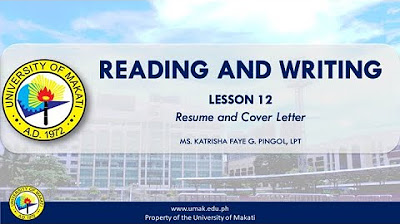Study Indicates Presence of Workplace Discrimination Against People With Disabilities
Summary
TLDRA study sent out 6,001 identical resumes with varying disclosures of disability status in cover letters to examine employer interest. The surprising result showed that applicants with disabilities received 26% fewer callbacks, especially experienced ones, mainly from small firms. This suggests a stigma towards disability, with employers perceiving them as higher risk and costly. The study highlights the need for broader coverage of the Americans with Disabilities Act and emphasizes the importance of diversity in hiring practices.
Takeaways
- 📊 Conducted a study with over 6,000 resumes to examine employer interest in job applicants with disabilities.
- 🔍 Resumes were identical except for the indication of disability status in the cover letters.
- 🤔 Found that 26% of applicants with disabilities received expressions of employer interest, compared to those without.
- 📉 Experienced applicants with disabilities were less likely to get callbacks, particularly from small-sized firms.
- 📈 Medium and large-sized firms seemed to adhere more closely to the mandates of the Americans with Disabilities Act (ADA).
- 🏢 Small-sized firms, not covered by ADA, showed a higher likelihood of discrimination against applicants with disabilities.
- 💡 Suggests that social desirability bias might be reduced by sending out resumes rather than surveys to employers.
- 🔑 The study builds on previous research that found racial discrimination in hiring practices by using similar methodology.
- 🤝 Believes that there is still a stigma attached to disability that affects hiring decisions.
- 💼 Employers may perceive experienced applicants with disabilities as riskier due to potential accommodations and liabilities.
- 🌐 Long-term implications include expanding ADA coverage and raising awareness about the importance of disability diversity in hiring.
Q & A
What was the purpose of constructing fake resumes in the study?
-The purpose was to explore whether job applicants with disabilities received fewer expressions of employer interest compared to those without disabilities.
How were the resumes and cover letters structured to test for discrimination?
-The resumes were identical, and the cover letters disclosed the applicant's condition in three different ways: one third indicated a spinal cord injury, one third indicated Asperger's syndrome, and one third did not disclose any disability.
What was the surprising finding regarding the callback rates for applicants with disabilities?
-It was found that 26% of applicants with disabilities received expressions of employer interest, which was a lower rate compared to those without disabilities.
Why were high-experience applicants less likely to receive callbacks, and what does this suggest about employer perceptions?
-High-experience applicants received fewer callbacks, possibly because employers perceive them as riskier due to potential higher pay demands and the assumption that they might require accommodations, which could lead to increased liability and unpredictability in work performance.
How does this study differ from previous research on disability employment?
-Unlike surveys that might be affected by social desirability bias, this study used a field experiment approach by sending out resumes to see actual employer responses, eliminating the bias of what employers think the researchers want to hear.
What is social desirability bias, and why is it a concern in surveys about employer attitudes?
-Social desirability bias is the tendency of respondents to answer questions in a manner that will be viewed favorably by others, which can lead to inaccurate responses about attitudes and behaviors towards individuals with disabilities.
How does the study's methodology relate to a famous research study involving resumes with black-sounding names?
-The methodology is similar in that both studies used identical resumes and varied only one factor to observe the impact on callback rates, highlighting potential discrimination.
What was the role of small-sized firms in the study's findings regarding discrimination?
-Small-sized firms were more likely not to give callbacks, suggesting they might not have a robust HR infrastructure or may not be familiar with the Americans with Disabilities Act (ADA).
What surprised the researchers about the callback rates for experienced applicants?
-The researchers were surprised to find that experienced applicants, particularly those with a CPA and a stellar record, received fewer callbacks than expected, indicating a potential stigma attached to disability.
What are some implications of the study's findings for the ADA and employment practices?
-The findings suggest that the ADA might be working for larger firms but could benefit from expanding its coverage to include smaller firms and raising awareness about the Act among all employers.
What long-term implications does the study suggest for improving employment opportunities for people with disabilities?
-The study implies the need for broader coverage of the ADA, increased awareness among small businesses, and a broader conversation about the importance of diversity, including disability diversity, in the workplace.
Outlines

This section is available to paid users only. Please upgrade to access this part.
Upgrade NowMindmap

This section is available to paid users only. Please upgrade to access this part.
Upgrade NowKeywords

This section is available to paid users only. Please upgrade to access this part.
Upgrade NowHighlights

This section is available to paid users only. Please upgrade to access this part.
Upgrade NowTranscripts

This section is available to paid users only. Please upgrade to access this part.
Upgrade NowBrowse More Related Video

5 Cover Letter MISTAKES that cost you your JOB!

How to Write a Great Resume and Cover Letter

Land a Job using ChatGPT: The Definitive Guide!

Lesson 12: Resume and Cover Letter | Reading and Writing

Write an Incredible Resume: 5 Golden Rules!

How to Make a Resume Stand Out: Crash Course Business - Soft Skills #5
5.0 / 5 (0 votes)